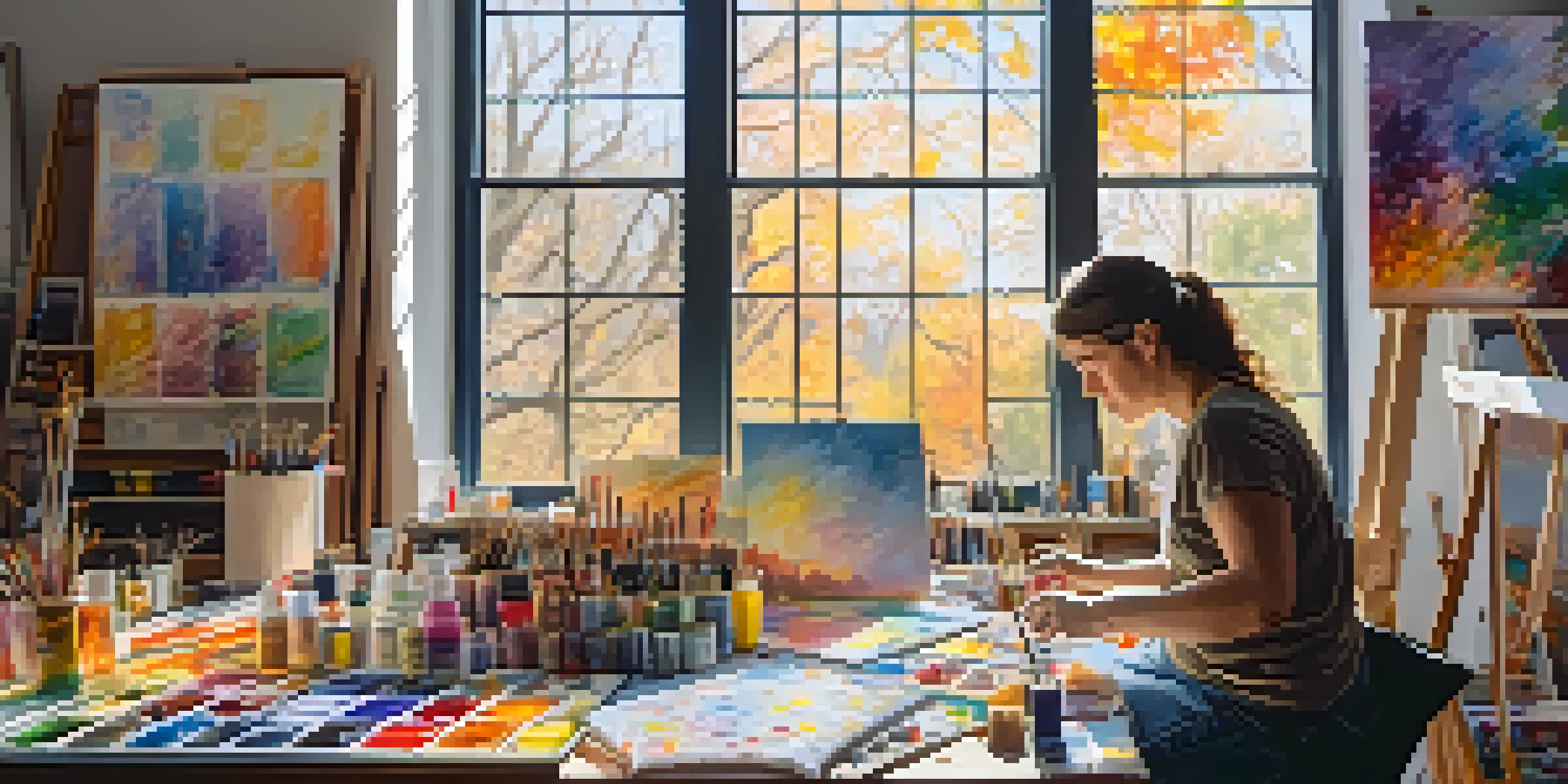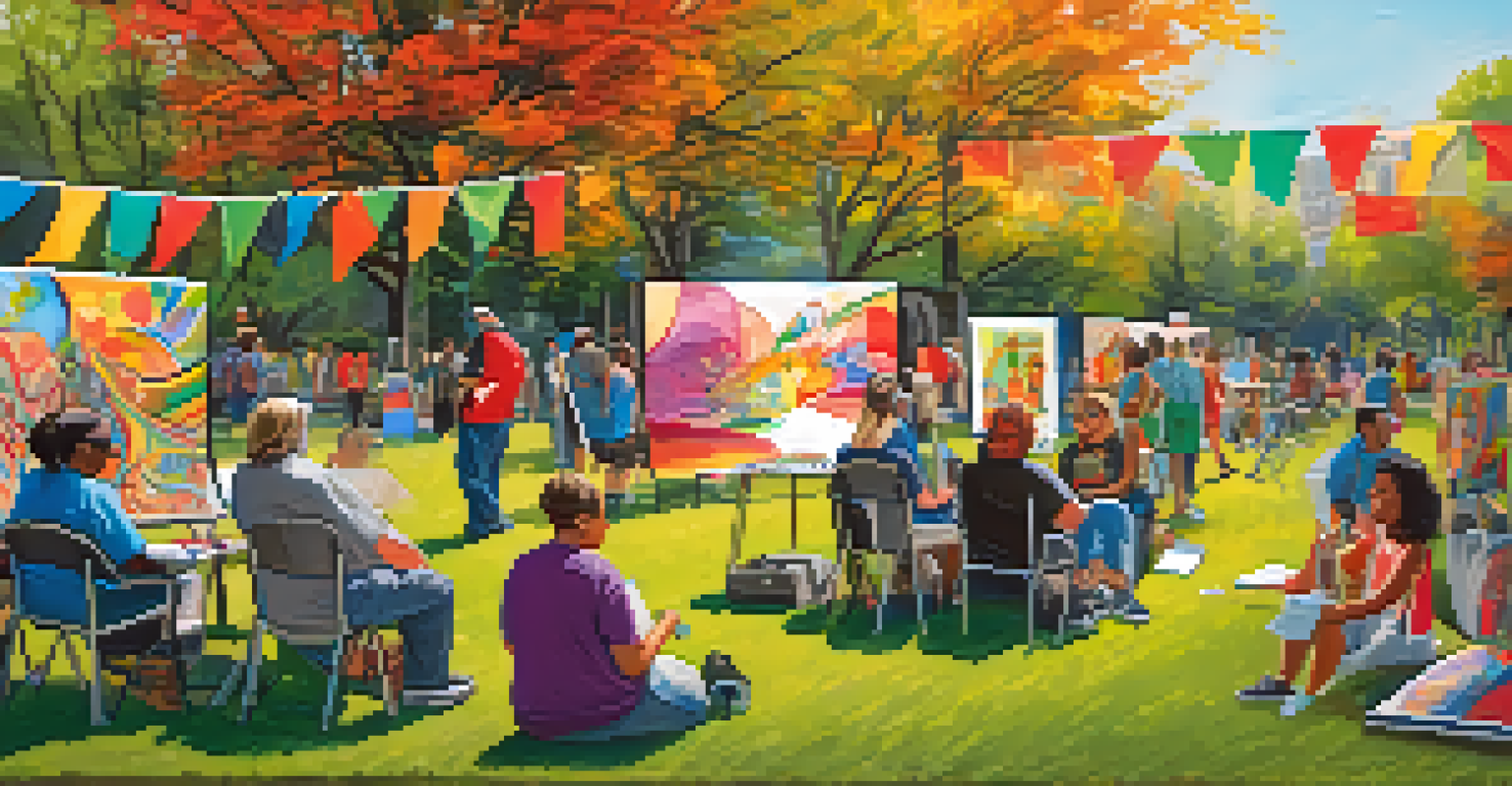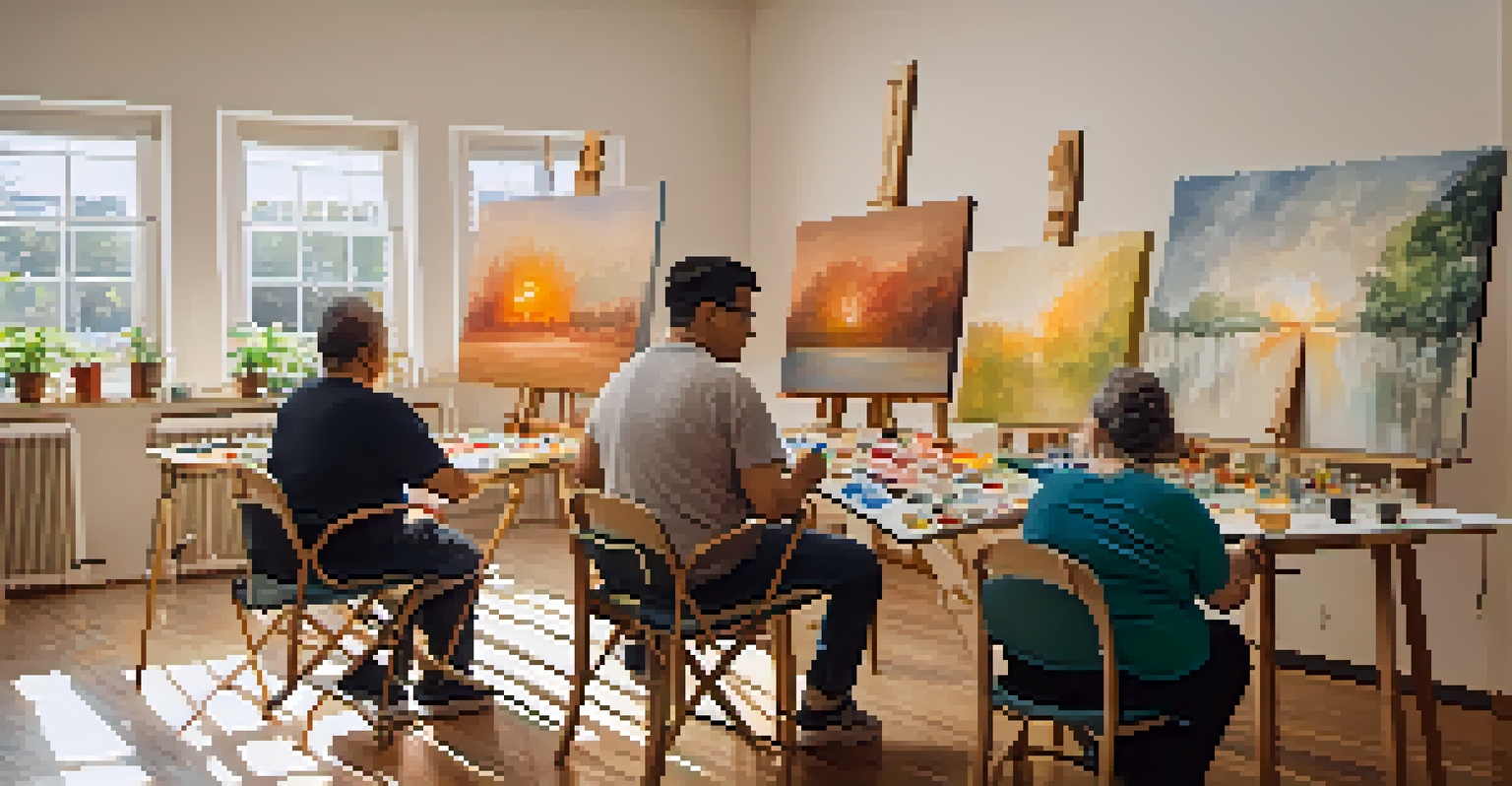Art and the Body: Exploring Disability and Physicality

The Intersection of Art and Disability: A New Perspective
Art has always been a powerful medium for expressing the human experience, and when combined with the themes of disability, it opens new avenues for understanding. Artists with disabilities often provide unique insights into their lived experiences, challenging societal perceptions of ability and normalcy. Through their work, they invite us to see the body not just as a vessel, but as a profound means of communication and expression.
Art enables us to find ourselves and lose ourselves at the same time.
This intersection encourages a broader conversation about what it means to live in a body that may not conform to conventional standards. The narratives conveyed through their art can help dismantle stereotypes and promote empathy among viewers. By engaging with these perspectives, we can foster a more inclusive understanding of what it means to be human.
In essence, the dialogue between art and disability transcends mere representation; it advocates for recognition, respect, and the celebration of diversity. This exploration not only enriches the art world but also offers valuable lessons for society as a whole.
Physicality in Art: A Means of Expression
Physicality plays a crucial role in the way art is created and experienced, especially for artists with disabilities. The body becomes not just a subject but an essential tool for creation, adding layers of meaning to their work. For instance, artists who navigate mobility challenges might use their creative processes to express themes of struggle, resilience, or liberation.

Through different mediums—be it painting, sculpture, or performance art—these expressions serve as a reflection of their physical experiences. The tactile nature of art allows for an intimate connection with the audience, inviting them to engage with the work on a sensory level. This engagement can lead to a deeper understanding of the challenges faced by individuals with disabilities.
Art as a Voice for Disability
Artists with disabilities use their work to challenge societal perceptions and redefine what it means to live in a diverse body.
Ultimately, the physicality in art becomes a powerful narrative device that bridges the gap between artist and observer. It invites us to reconsider our perceptions of disability and opens our minds to the richness of diverse experiences.
Challenging Traditional Notions of Beauty
Art has long been a vehicle for exploring and challenging societal norms, particularly around concepts like beauty and desirability. Artists with disabilities often confront these standards head-on, using their work to redefine what beauty means. By showcasing their bodies and experiences, they highlight that beauty exists in myriad forms, beyond the ideals traditionally celebrated in society.
The beauty of art is that it can be created and appreciated by everyone, regardless of ability.
This act of defiance not only empowers the artists but also encourages viewers to expand their definitions of beauty. For example, the rawness and authenticity of their work can resonate deeply, prompting introspection and a reevaluation of personal biases. Such reflections can lead to a more inclusive understanding of human value and dignity.
In a world that often marginalizes those who don't fit a certain mold, these artists challenge us to embrace diversity in all its forms. Their contributions remind us that beauty is not a singular vision but a rich tapestry of experiences, identities, and expressions.
The Role of Accessibility in Art Creation
Accessibility in the arts is vital for ensuring that all artists, regardless of ability, have the opportunity to express themselves. This means creating inclusive spaces that accommodate various needs, allowing for diverse voices to emerge. When accessibility is prioritized, the art community becomes richer and more vibrant, reflecting a broader spectrum of human experiences.
For instance, galleries that provide adaptive technologies or resources can enable artists with physical disabilities to showcase their work more effectively. Additionally, integrating accessibility into the creative process can inspire innovative approaches to art-making. This not only impacts the artists but also enhances the experience for audiences who engage with their work.
Importance of Accessibility in Art
Creating inclusive spaces and resources is crucial for enabling artists with disabilities to express themselves and share their experiences.
Therefore, advocating for accessibility is not just about meeting legal requirements; it's about fostering an environment where creativity flourishes without limitations. By embracing inclusivity, we can celebrate the myriad ways art can be created and appreciated.
Art Therapy: Healing Through Creative Expression
Art therapy has emerged as a powerful tool for individuals with disabilities, offering a channel for self-expression and healing. By engaging in creative activities, participants can explore their emotions, confront challenges, and find solace in their artistic endeavors. This therapeutic approach recognizes the intrinsic connection between physicality and emotional well-being, particularly for those navigating complex issues related to disability.
For many, creating art can be a transformative experience, allowing them to communicate feelings that might be difficult to articulate verbally. The process of making art can foster a sense of agency and empowerment, offering a respite from the struggles of daily life. This healing aspect of art not only benefits individual artists but also resonates with their communities, promoting shared understanding and support.
In essence, art therapy harnesses the power of creativity to facilitate emotional growth and resilience. By integrating artistic practices into therapeutic settings, we can cultivate a more compassionate and empathetic society.
Community and Collaboration in Artistic Expression
Community plays a significant role in the lives of artists with disabilities, providing support and opportunities for collaboration. Many artists find strength and inspiration through shared experiences, often forming collectives that amplify their voices. These collaborative efforts can lead to powerful projects that challenge norms and foster greater visibility for disability representation in the arts.
For example, community art initiatives often create spaces where artists can connect, share ideas, and co-create. This collaborative spirit enriches the artistic process, as diverse perspectives come together to produce meaningful work. Such projects not only highlight individual talents but also strengthen bonds within the community, promoting solidarity and mutual understanding.
Community Fuels Artistic Collaboration
The support and collaboration within communities of artists with disabilities lead to impactful projects that amplify their voices and challenge norms.
Ultimately, these collaborative efforts remind us that art is not just an individual pursuit but a collective journey. By supporting one another, artists with disabilities can create impactful work that resonates on multiple levels, inspiring change and fostering inclusivity.
The Future of Art and Disability: A Road Ahead
As conversations around disability and representation continue to evolve, the future of art holds immense potential for growth and innovation. With increasing awareness and advocacy for inclusivity, more artists with disabilities are gaining recognition and opportunities to showcase their work. This shift signals a promising trend toward a more equitable art world.
The integration of technology and digital platforms also plays a crucial role in this evolution. Artists can now reach broader audiences and engage in dialogues that transcend geographical boundaries. By leveraging these tools, they can share their narratives and challenge perceptions on a global scale.

Looking ahead, it's essential that we continue to advocate for accessibility, support emerging artists, and celebrate the diverse contributions of those with disabilities. Together, we can help shape a future where all voices are heard, and creativity knows no bounds.